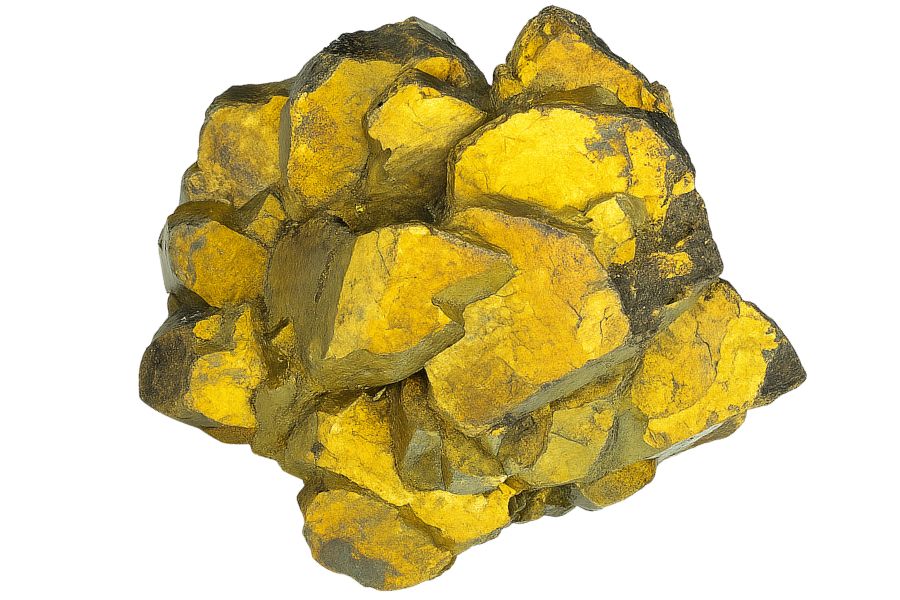Hidden among rivers, quarries, and wooded hills, crystals in Pennsylvania rest in places where time and erosion have worked together. Across the state, minerals lie just beneath the surface waiting to be discovered.
Finding them takes patience and an eye for detail rather than expensive tools. A careful search in the right kind of terrain often pays off with clear or colored quartz pieces worth keeping.
Recognizing these hints in the landscape can completely change what you bring home. With the right quidance, the state’s ordinary-looking hills start to reveal their hidden sparkle.
- The extensive local experience and understanding of our team
- Input from multiple local crystal hunters and crystal collecting groups
- The accessibility of the crystal mining locations
- Safety and potential hazards when collecting
- Private and public locations
- A desire to include locations for both experienced crystal hunters and those who are just starting out
Using these weights we think we’ve put together the best list out there for those who love finding new crystals for our collections!
The Types of Crystals We Found
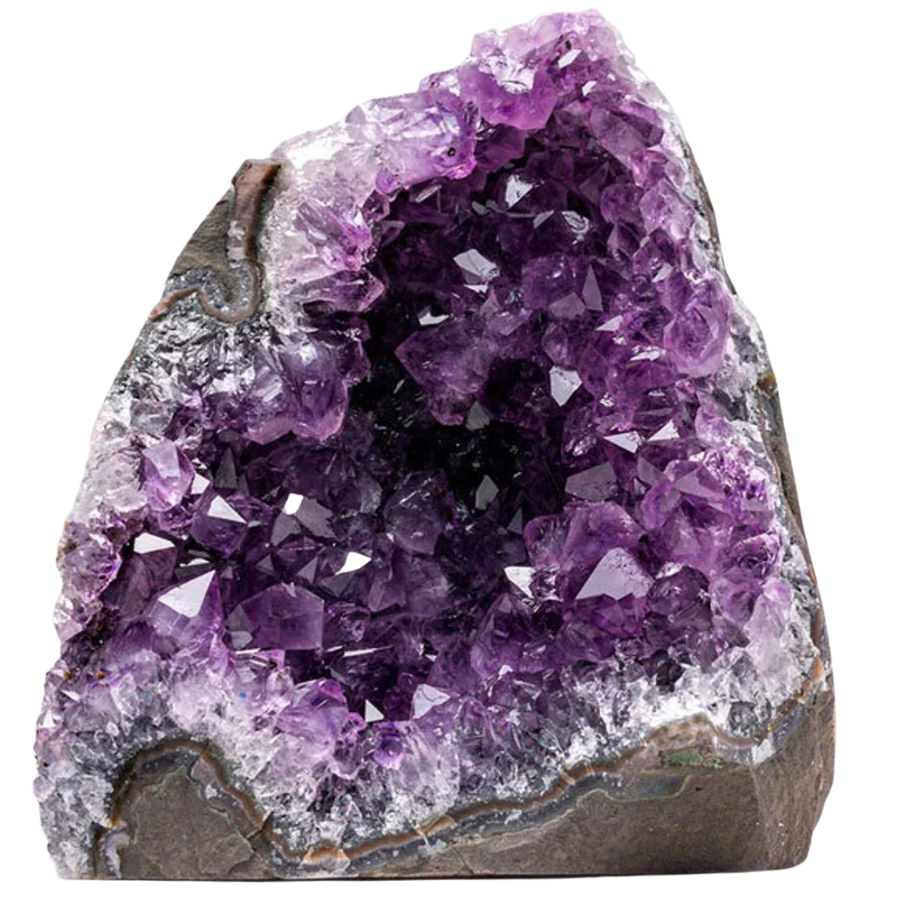
Pennsylvania is a treasure trove of crystal formations, and with so many various types of crystals to explore, it’s no wonder people come from different locations to find crystals here.
The state’s unique geological makeup and history make it a perfect spot to find a broad range of crystals. These unusual and stunning specimens make our state an attractive rockhounding destination.
ere are the most valuable finds out there ready to be found:
Sapphire

Sapphire is a gemstone variety of the mineral corundum, known for its rich blue color. However, sapphires can also appear in other shades, like pink, yellow, and even colorless, depending on the trace elements they contain.
In Pennsylvania, sapphires are typically small and light in color, most often blue or grayish-blue. They’re found in areas with certain types of metamorphic rocks and alluvial deposits where erosion has carried the stones downstream.
Why It’s Valuable
Sapphires are prized for their beauty, rarity, and durability. High-quality sapphires with vivid color and clarity can fetch high prices, especially when used in jewelry.
Even smaller or less vibrant stones can still hold value to collectors who love their history and uniqueness. Plus, there’s something priceless about finding a sapphire yourself—it’s like unearthing a hidden treasure that’s millions of years old.
Great Places to Find It Here
If you’re interested in hunting for sapphire, you’ll need some patience and a good eye, but a few places in Pennsylvania are known for turning up small specimens (especially the ones in our full Sapphire guide here):
- Schuylkill County: This area is known for its metamorphic rocks, where small sapphire deposits have occasionally been found. Check gravel pits and areas with exposed rock.
- Pine Creek Gorge (Tioga County): The erosion from the creek can reveal small gemstones, including corundum varieties like sapphire, in gravel bars along the water.
- Lehigh Valley: In spots with alluvial deposits, like streambeds and riverbanks, there’s a chance to find small sapphires mixed in with other minerals.
Check out the full guide to see all the rest of the spots.
Silver/Galena
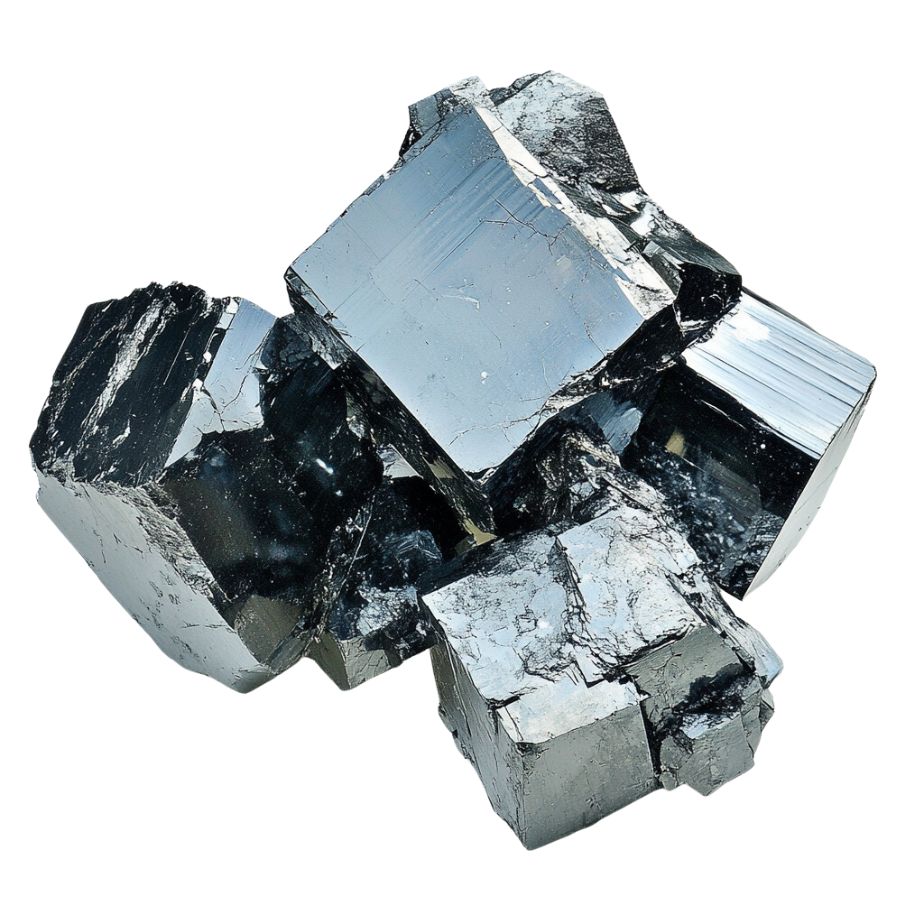
Galena is a lead sulfide mineral that forms in cubic crystals or as massive chunks in veins of rock. It has a shiny, metallic luster that makes it really stand out when you find it. Here in Pennsylvania, galena is often found in association with other minerals like sphalerite (zinc sulfide), quartz, and calcite.
You’re most likely to find it in areas with limestone or near historic mining sites, where it was extracted for its lead content.
Why It’s Valuable
Galena is valuable for a few reasons. First, it’s the primary ore of lead, which has been used for everything from pipes to batteries for centuries. Even though lead mining isn’t active in Pennsylvania anymore, galena remains an important piece of the state’s industrial history.
For collectors, its shiny, cubic crystals are a must-have in any mineral collection. Plus, galena can contain traces of silver, which makes it even more interesting to find.
Great Places to Find It Here
If you’re looking to find silver, you’ll want to head to areas in Pennsylvania known for their mining history or limestone geology (you can find our full guide to finding Silver in PA here). Here are some great spots to start:
- Franklin County: Look around old mining areas near Waynesboro, where galena has been found alongside quartz and other minerals.
- Lancaster County: Check limestone quarries in this area; galena can often be found mixed in with calcite and other minerals.
- York County: Some abandoned mines and rock outcrops in this region have produced galena crystals in the past.
Check out the full silver guide for the rest of the locations.
Amethyst
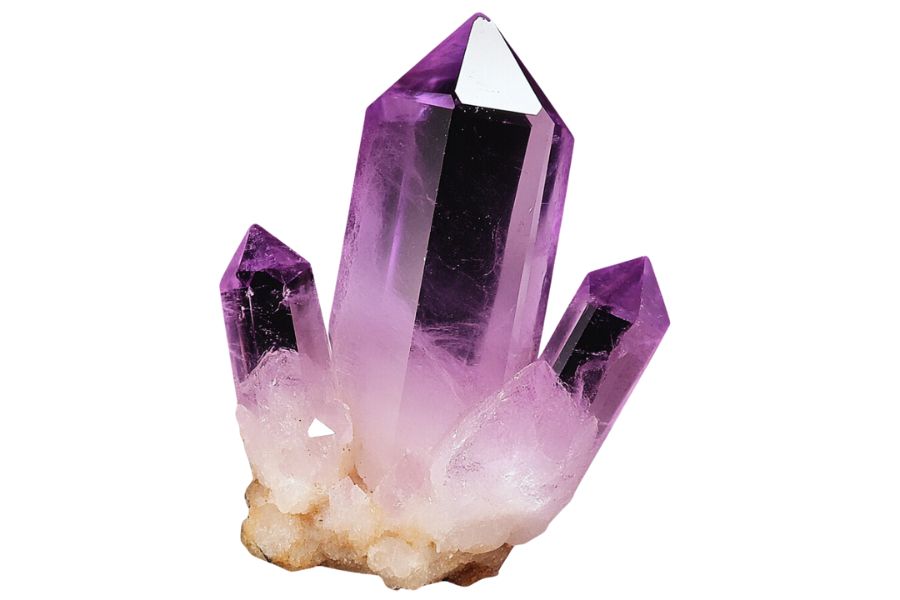
Amethyst is a quartz crystal that gets its purple color from iron and radiation exposure over millions of years. Here in Pennsylvania, the amethyst you’ll find often comes in shades ranging from light lavender to deep, dark purples.
Sometimes it’s mixed with clear quartz, giving it a layered or banded appearance. You’re most likely to find it in geodes or as clusters in veins of rock, and occasionally, you might stumble across single crystals broken free by erosion.
Why It’s Valuable
Amethyst is highly prized for both its beauty and its versatility. Deep purple amethyst is the most valuable, especially if it’s transparent and free of cracks. Even lighter-colored stones can be worth something if they’re well-formed or used in decorative pieces.
Beyond its monetary value, it’s also a popular stone for jewelry and collectors, which makes it a great find whether you’re looking to sell or keep it as a prized possession.
Great Places to Find It Here
If you’re ready to get out there and start searching, you’re in luck since we’ve already written a full guide to finding Amethyst in Pennsylvania. Southeastern Pennsylvania is the best area to look, but there are some specific spots where amethyst has been discovered:
- Lancaster County: Quarries and rocky areas around Lancaster are known for producing amethyst. Check exposed rock faces and rubble piles.
- York County: This area has had reports of small but beautiful amethyst crystals, often in conjunction with other quartz varieties.
- Delaware County: Look for old mining areas or rocky streambeds where erosion might have exposed amethyst deposits.
For more locations check out the full guide to finding Amethyst in PA here.
Pyrite (Fool’s Gold)

Pyrite is an iron sulfide mineral that forms in a variety of shapes and sizes. Its metallic gold color and shiny surface make it stand out, and it often forms in cubic or crystalline shapes.
In Pennsylvania, pyrite is commonly found in coal beds, limestone formations, and along streams. Sometimes, it appears in clusters of small crystals or as single, well-formed cubes embedded in rock.
Why It’s Valuable
Even though it’s called “fool’s gold,” pyrite has value in its own right. Collectors prize it for its bright metallic luster and unique crystal shapes. It’s also used in some industries for its sulfur content and as a source of iron in certain processes.
But for most of us, its value lies in its beauty and the thrill of discovering something that looks like treasure in the wild.
Great Places to Find It Here
If you’re up for some rockhounding, there are plenty of places in Pennsylvania where pyrite can be found. The key is to look in areas with coal deposits, sedimentary rocks, or streambeds. Here are some of the best places to start:
- Coal Regions in Western Pennsylvania: Pyrite is commonly found in the coal beds of western Pennsylvania. Look in mine tailings or exposed rock layers near old mining sites.
- Kittanning and Clarion Formations: These sedimentary rock layers, found in central and western Pennsylvania, are known for producing pyrite crystals.
- Streambeds in Southeastern Pennsylvania: Streams that cut through limestone-rich areas often reveal pyrite deposits. Bring a sieve or shovel to explore gravel bars and eroded banks.
Garnet
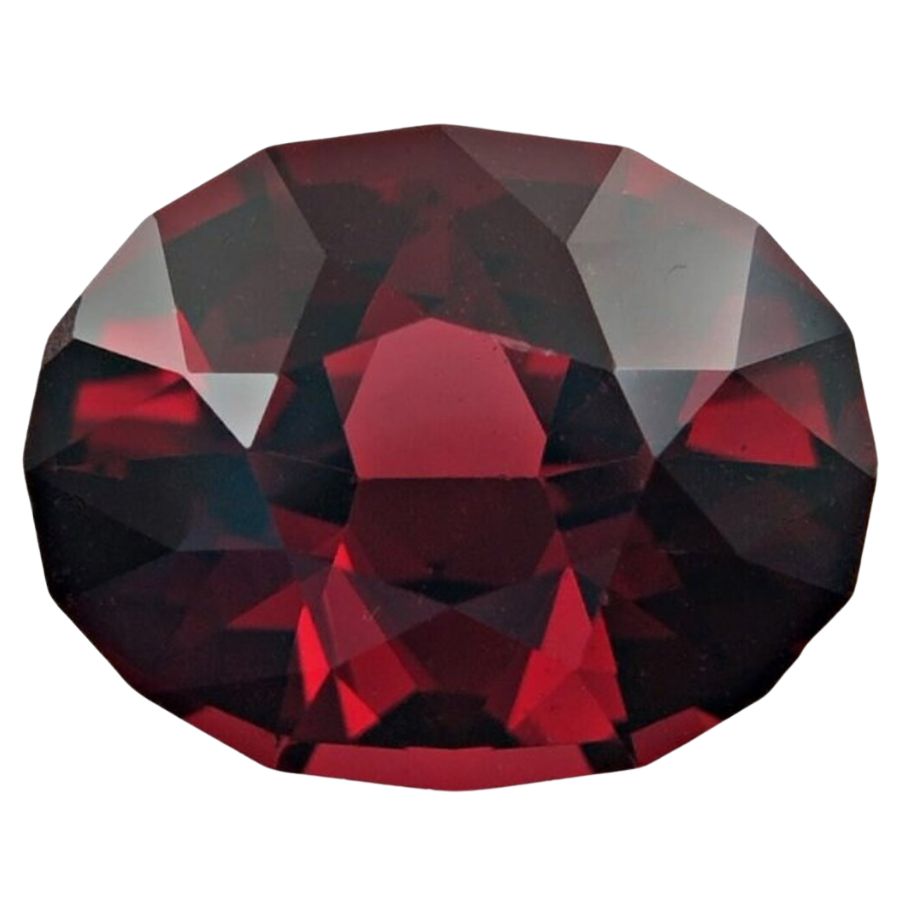
Garnet is a mineral made up of silicate compounds, and it comes in a variety of colors depending on the specific chemical makeup. In Pennsylvania, the most common type of garnet is almandine, which has a deep red or reddish-brown color.
These garnets often form as small crystals in metamorphic rocks like schist and gneiss, especially in areas that have experienced intense heat and pressure over millions of years.
Why It’s Valuable
Garnets are valuable for both their beauty and their practical uses. Deep red almandine garnets are popular for jewelry and can fetch a good price if they’re large and well-formed.
Even smaller, less perfect specimens are highly prized by collectors because of their unique crystal shapes and vibrant colors. Plus, garnets are used industrially as abrasives, so they have practical value as well.
Great Places to Find It Here
If you’re looking to find garnets in Pennsylvania, there are some great places to explore. Most of the state’s garnet deposits are in the eastern part, especially where metamorphic rocks are exposed:
- Delaware Water Gap: The rocks around the Delaware Water Gap are rich in garnets. Look for exposed rock faces or loose stones along hiking trails.
- Lehigh County: This area is known for its schist formations, which often contain small, bright red garnet crystals. Old quarries and rocky outcrops are good spots to search.
- Schuylkill County: Garnets have been found in metamorphic rocks here, especially near areas of exposed bedrock or along streambeds.
Moonstone
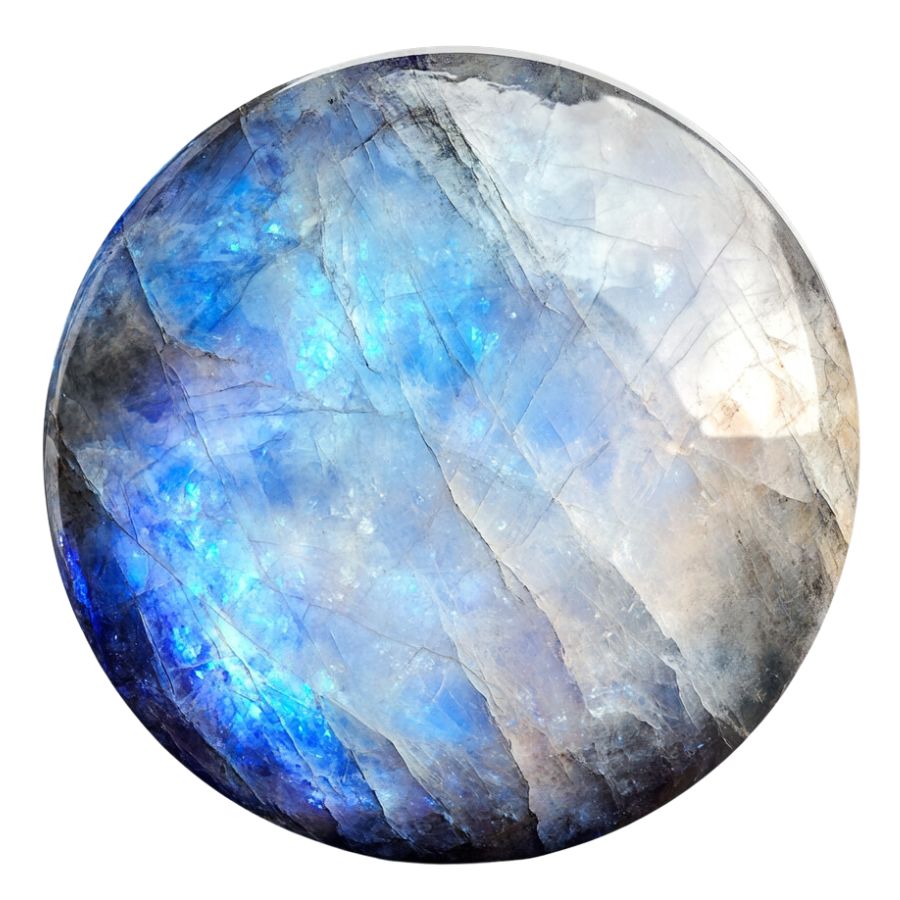
Moonstone is a variety of feldspar, known for its shimmering, almost magical glow called adularescence. This effect happens when light scatters between thin layers inside the stone, creating that soft, glowing sheen.
In Pennsylvania, moonstone tends to come in shades of white, gray, or peach, and while the glow might not be as dramatic as stones from other regions, it’s still a beautiful and collectible find.
Why It’s Valuable
Moonstone is prized for its ethereal beauty and its connection to folklore, where it’s often thought of as a “stone of intuition” or “gem of the moon.” High-quality moonstone with a strong adularescent glow is especially valuable.
Even more subtle specimens are sought after for jewelry, decorative use, and by collectors who love its unique properties. Pennsylvania moonstone may not fetch top market prices, but its rarity in the state makes it a prized find for local rockhounds.
Great Places to Find It Here
Moonstone isn’t super abundant in Pennsylvania, but with a little effort, you can still track it down in a few key spots found in our guide to Pennsylvania Moonstone. Check these places to start your search:
- Southeastern Pennsylvania: Feldspar-rich areas around Chester and Delaware counties sometimes produce moonstone as part of their mineral deposits. Look in quarries or rocky streambeds.
- Northern Pennsylvania: Near the Endless Mountains region, feldspar-rich pegmatites can occasionally yield moonstone. This area requires careful exploration, but it’s worth the effort.
- Western Pennsylvania: Along streams and exposed rock formations in Greene and Fayette counties, you might stumble across feldspar stones, some of which can include moonstone.
To find even more locations check out the full list of PA Moonstone locations here.
Malachite
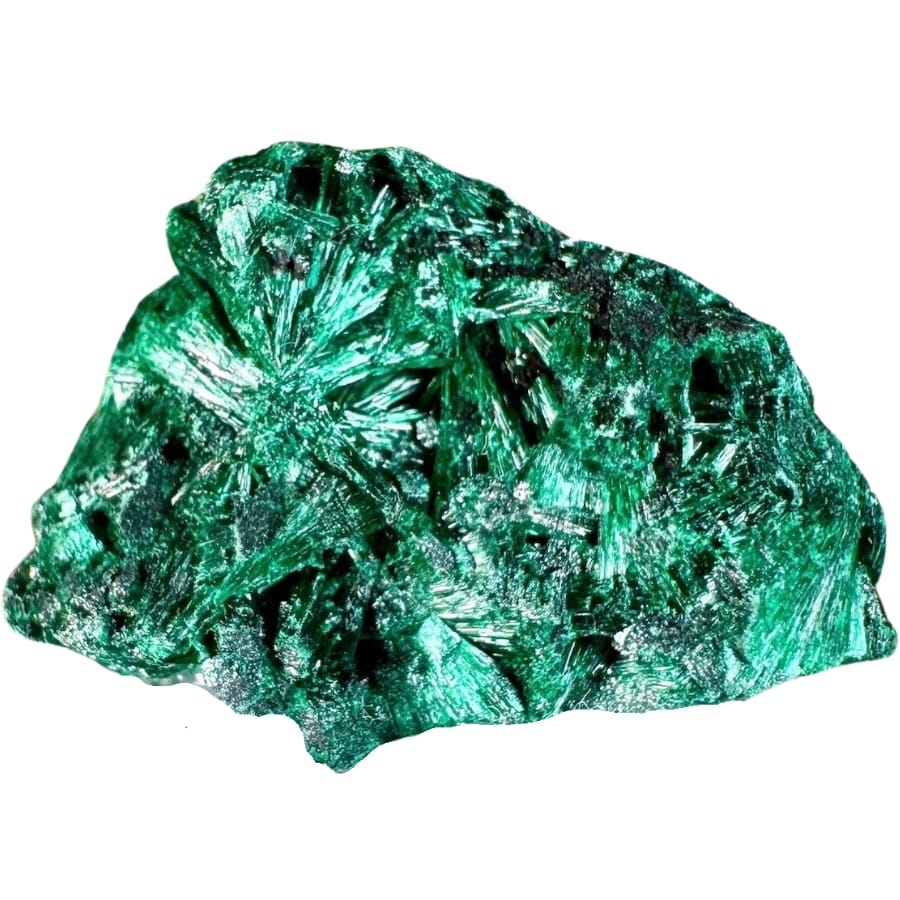
Malachite is a copper carbonate mineral that forms in areas rich in copper deposits. It’s known for its bright green color and the way it forms concentric bands or swirling patterns, almost like tree rings.
In Pennsylvania, malachite is typically found in small deposits near areas where copper mining once took place. The pieces here may not be huge, but they’re still striking and worth adding to a collection.
Why It’s Valuable
Malachite is valuable for a few reasons. First, its vivid green color and natural patterns make it a popular choice for jewelry and decorative items. High-quality specimens with clear banding or unusual formations can be worth quite a bit.
Plus, because it’s tied to copper deposits, malachite is also of interest to geologists and historians who study Pennsylvania’s mining past. Even smaller pieces are prized by collectors for their beauty and uniqueness.
Great Places to Find It Here
If you’re looking to hunt for malachite in Pennsylvania, the best places are near old copper mines and areas where copper deposits were historically discovered. Here are a few spots to check out:
- Cornwall Mines, Lebanon County: This old mining area is one of the most well-known locations for malachite in the state. Look for greenish rocks in the debris piles.
- New Garden Township, Chester County: Copper deposits in this area have yielded small amounts of malachite, especially near exposed rock faces and old quarries.
- Pittsburg Area Mines, Allegheny County: Western Pennsylvania’s history of mining sometimes reveals malachite among other minerals in tailings and rocky areas.
Beryl

Beryl is a mineral composed of beryllium aluminum silicate, and it forms in hexagonal crystals that can grow quite large. While emerald (green) and aquamarine (blue) are the most famous varieties of beryl, Pennsylvania typically yields light green to yellowish beryl, sometimes called golden beryl.
You might also find some pale blue or colorless beryl, depending on the location. These crystals often form in pegmatite rocks, which are coarse-grained igneous formations.
Why It’s Valuable
Beryl’s value comes from its rarity and beauty. Even the light green and golden varieties can fetch a good price if the crystals are large, well-formed, and free of cracks. Its association with precious gemstones like emerald and aquamarine makes any beryl find exciting.
Plus, collectors and jewelers alike love it for its clean, geometric crystal shapes and natural shimmer.
Great Places to Find It Here
Finding beryl in Pennsylvania takes a little effort, but it’s definitely worth the hunt. Pegmatite deposits in the state are your best bet, especially in areas where mining activity has exposed these rocks. You can find the full lost of locations in our Pennsylvania Beryl guide here.
Here are a few great spots to start your search:
- Chester County: The granite quarries and pegmatite exposures in Chester County have produced beryl crystals, particularly around the Coatesville area.
- Delaware County: Known for its rich geology, Delaware County has several spots where pegmatites contain beryl. Check out old mine tailings for potential finds.
- York County: Some areas in York County, especially near igneous rock outcrops, have been known to produce beryl crystals in light green and yellow shades.
You can see even more locations here in the full Beryl guide.
Opal

Opal is a hydrated silica mineral that can form in cracks and cavities of rocks. It’s famous for its iridescent play of colors, but not all opals show this effect. In Pennsylvania, the opals you’ll find are usually “common opal,” which can appear in shades of white, gray, yellow, or even pale blue.
Occasionally, you might stumble upon opals with subtle color flashes, but they’re rare here. These opals typically form in sedimentary rocks and old volcanic areas.
Why It’s Valuable
Opal is valued for its unique look and rarity. Even common opal, without the rainbow effect, is prized for its smooth texture and natural beauty. Collectors love it for its aesthetic appeal, and even small pieces can be polished and used in jewelry.
Its rarity in Pennsylvania makes finding a good specimen feel like a real achievement, adding to its value in both monetary and sentimental terms.
Great Places to Find It Here
If you’re looking for opal, Pennsylvania has a few promising areas (you can see them all in our full guide to finding opal in PA here. Most finds come from places with sedimentary rock formations or areas where silica-rich groundwater was once present. Here are some good places to start your search:
- Schuylkill County: Old coal mines and surrounding areas sometimes reveal opal in sedimentary rocks. Keep an eye out near exposed rock faces or tailings piles.
- Northumberland County: Known for its unique geology, this area has produced small opals in streambeds and eroded rock formations.
- Lancaster County: Certain quarries in this area have reported opal formations, often found in veins alongside quartz.
See all the rest of the spots in the full guide here.
Hematite
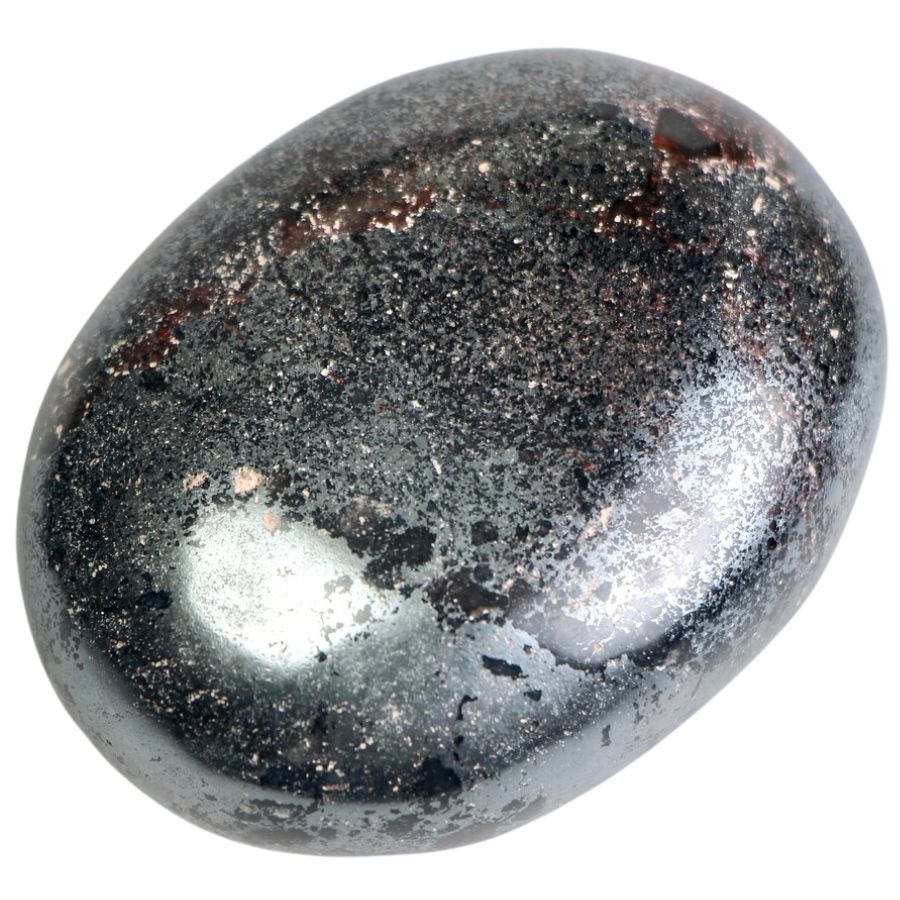
Hematite is a mineral made primarily of iron oxide, giving it its distinctive reddish color when powdered. In Pennsylvania, you can find two main types: the shiny, metallic-looking variety and the earthy, reddish-brown type.
The metallic version is often found in clusters or veins, while the earthy form shows up in soft, rust-colored deposits. Both are unique and worth adding to a collection.
Why It’s Valuable
Hematite is valuable for a couple of reasons. First, it’s one of the primary ores of iron, which has been crucial to Pennsylvania’s industrial history. The mineral also has aesthetic value—those shiny, metallic specimens are especially popular among collectors.
On top of that, hematite has a unique magnetic property and is even used in alternative medicine and jewelry, which adds to its appeal.
Great Places to Find It Here
If you’re looking to hunt for hematite, Pennsylvania offers some fantastic spots to explore. Here are a few places where you’re likely to find it:
- Cornwall Mines, Lebanon County: These historic iron mines are a great place to find hematite. While active mining has long since stopped, the surrounding areas are rich in remnants of this mineral.
- Pine Grove Furnace State Park, Cumberland County: This area, once an important iron-making site, is known for hematite deposits. Look near the old furnace structures or in the rocky areas around trails.
- Mount Pisgah, Carbon County: This region is home to iron-rich deposits, including hematite. The mountain’s geology makes it a great spot for both collectors and amateur rockhounds.
The Best Locations For Crystal Mining We’ve Found

There are a lot of great places in our state to find crystals, but we’ve only picked our top six to get into detail. You’ll have a great time visiting these areas, as they have a handful of crystals you can find!
Always Confirm Access and Collection Rules!
Before heading out to any of the locations on our list you need to confirm access requirements and collection rules for both public and private locations directly with the location. We haven’t personally verified every location and the access requirements and collection rules often change without notice.
Many of the locations we mention will not allow collecting but are still great places for those who love to find beautiful rocks and minerals in the wild without keeping them. We also can’t guarantee you will find anything in these locations since they are constantly changing.
Always get updated information directly from the source ahead of time to ensure responsible rockhounding. If you want even more current options it’s always a good idea to contact local rock and mineral clubs and groups
Aquashicola River

Monroe County, Poconos, Eastern PA
The Aquashicola River is a tributary of the Lehigh River. It has a fascinating mix of natural beauty and geological significance. This river runs across the state and has been an important part of the region’s history.
In the past, it was an important waterway for local industries and communities, which helped the economy grow and develop. Today, it is a peaceful reminder of the state’s rich natural heritage, attracting tourists.
Numerous minerals and crystals are present in the river’s basin, resulting from hundreds of years of geological activity.
Where we found crystals at Aquashicola River
Outside the river, along the different rock formations, we had a great time discovering quartz, amethyst, calcite, and pyrite specimens.
Brookdale Mine
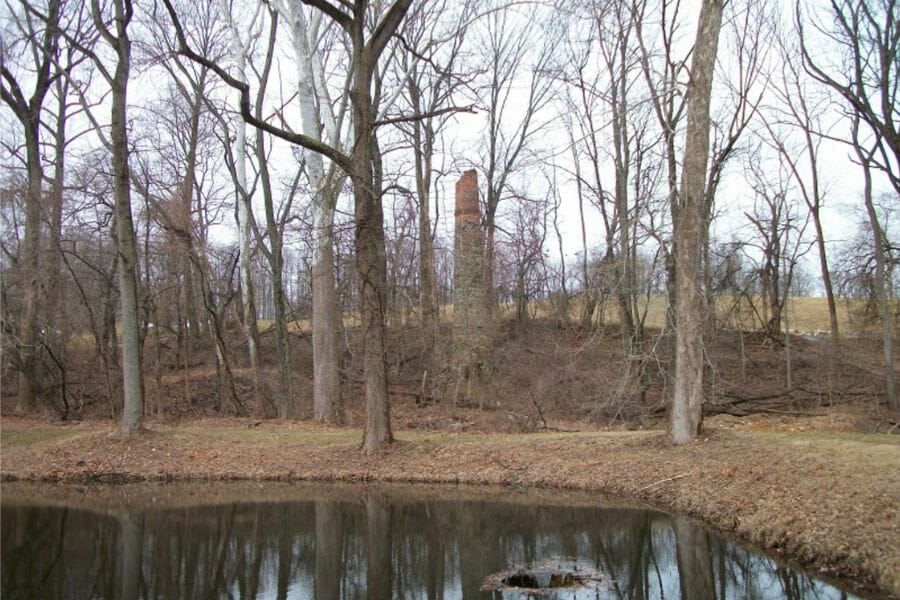
Liberty Township, PA 18822
A fascinating location full of geological treasures and history, Brookdale Mine’s mineral-rich terrain has been the center of mining activity for many years. Its history is entwined with the larger story of our state’s industrial and geological development.
Today, it’s renowned for its mineral-rich veins that run deep underground, making it a prime spot for crystal hunting. It’s also one of the best places to mine gems in Pennsylvania.
Initially mined for its coal and metal deposits, it eventually attracted the attention of industrial miners and mineral enthusiasts.
Many crystal collectors like the Brookdale Mine because it has a wide range of high-quality specimens. The environment in the mine has kept these crystals in amazing shape so that you can find well-formed specimens worth something.
Where we found crystals at Brookdale Mine
We had a great time exploring the areas surrounding the mines, where we found different breath-taking crystals.
If you want REAL results finding incredible rocks and minerals you need one of these 👇👇👇
Finding the coolest rocks in isn’t luck, it's knowing what to look for. Thousands of your fellow rock hunters are already carrying Rock Chasing field guides. Maybe it's time you joined the community.
Lightweight, mud-proof, and packed with clear photos, it’s become the go-to tool for anyone interested discovering what’s hidden under our red dirt and what they've already found.
Join them, and make your next rockhounding trip actually pay off.
What makes it different:
- 📍 Find and identify 140 incredible crystals, rocks, gemstones, minerals, and geodes across the USA
- 🚙 Field-tested across America's rivers, ranchlands, mountains, and roadcuts
- 📘 Heavy duty laminated pages resist dust, sweat, and water
- 🧠 Zero fluff — just clear visuals and straight-to-the-point info
- ⭐ Rated 4.8★ by real collectors who actually use it in the field
Caledonia State Park
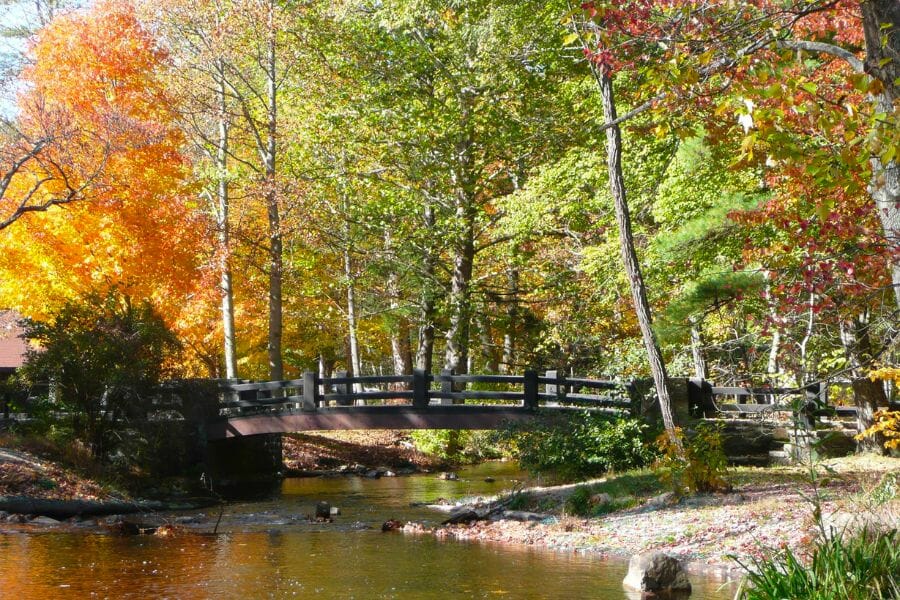
101 Pine Grove Rd, Fayetteville, PA 17222
Caledonia State Park is a great place for both nature lovers and history buffs. The park’s namesake, the Caledonia Furnace, was an important site during the Civil War and a big part of the iron industry, which helped the area’s economic and industrial growth.
Today, the park stands as a testament to this rich history, offering a variety of activities and attractions.
The park is a hidden gem for crystal lovers. Its geology is made up of a wide range of mineral deposits resulting from the area’s active geological past.
For fun, you can go hiking, camping, or fishing, and the beautiful Appalachian Mountains make the setting even more appealing. It also features a variety of rock formations, which can help you identify the crystals you’ll find.
Where we found crystals at Caledonia State Park
The park’s streams and rocky outcrops serve as ideal spots for discovering crystals, as natural erosion and weathering bring them to the surface.
Once you find a specimen, you might wonder how much do crystals cost? We answered that in our article, too.
Teeter Limestone Quarry
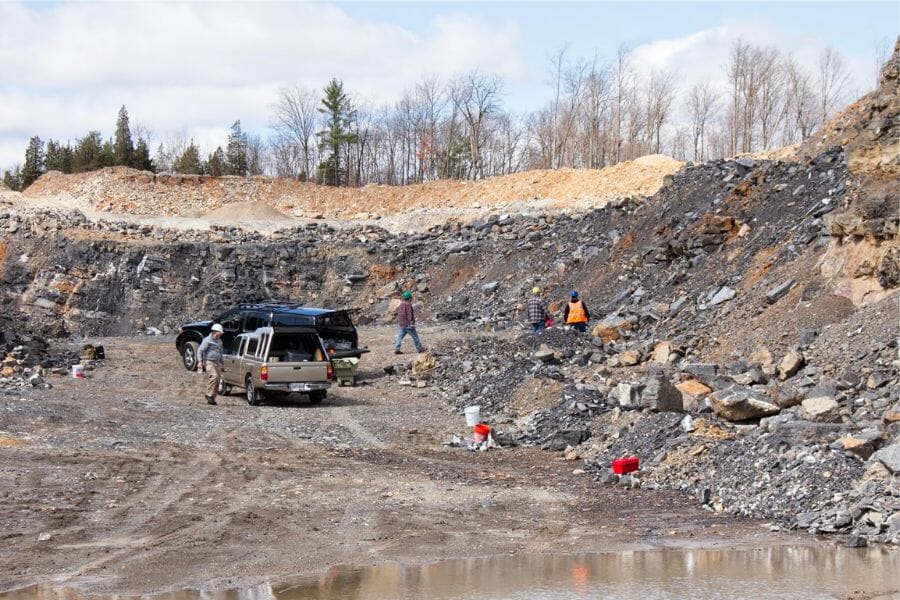
1575 Baltimore Pike, Gettysburg, PA 17325
The Teeter Limestone Quarry is both historically and geologically important. It was first built in the early 1900s because it had a lot of limestone, which was in high demand in the local construction and industrial sectors.
Over the years, the quarry has been an important part of the region’s growth, helping with many building projects and showing us the state’s rich geological history.
Layers of limestone exposed by the mine have been through many geological processes over millions of years. These processes have created rare and beautiful crystals.
You can go to the quarry and dig through the layers of limestone to find hidden treasures and learn more about the complex processes that shape our natural world.
Where we found crystals in Teeter Limestone Quarry
The best spot to find crystals in this area is on the west bank of Rock Creek, just before the Power Hill junction.
Once you find a specimen, you might wonder how much are crystals worth, so you can also refer to our article on that.
Chester Creek
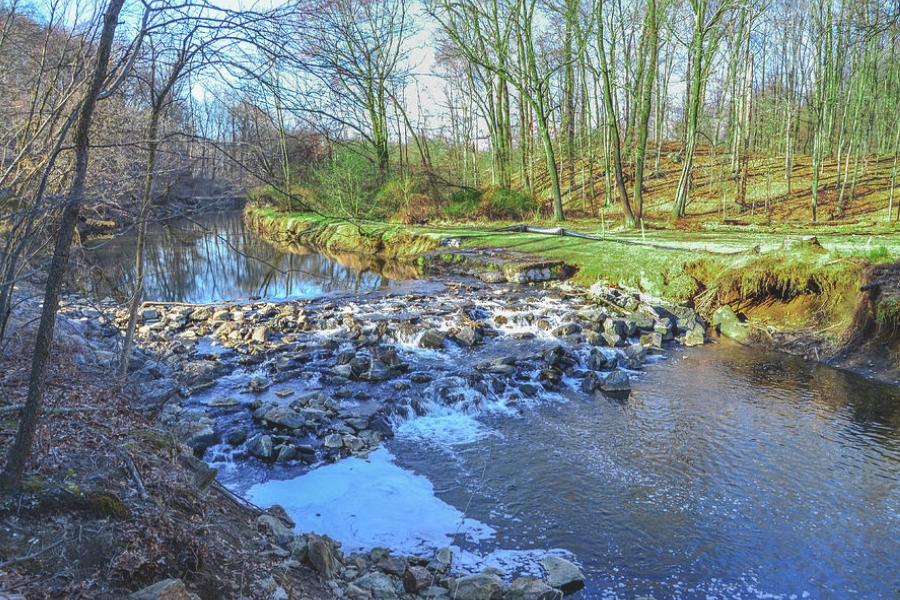
249 Knowlton Rd, Media, PA 19063
From its early use by Native American tribes to its role in the growth of local industries during the colonial and post-colonial periods, Chester Creek has been an important part of the area’s history.
The creek’s waters powered mills and factories, which helped the area’s economy grow significantly.
Chester Creek has a peaceful and beautiful landscape that is great for hiking, fishing, and taking pictures of nature. It’s a unique place to visit because it has historical and natural beauty.
You can enjoy the peace of the creek’s environment while learning about its geological treasures.
Where we found crystals at Chester Creek
Quartz crystals, such as amethyst and milky quartz, can be found in large amounts in the alluvial sediments along the creek’s banks and the areas next to them.
Natural processes like erosion and sedimentation have brought these crystals to the surface.
Schuylkill River

The Schuylkill River flows through our beautiful state and has a long history and fascinating geology. It was named “Schuylkill” by early Native American groups, which means “hidden river.”
The river has been very important to the state’s growth throughout history, especially during the Industrial Revolution, when it was the main way to move coal and other goods.
Besides crystal hunting, the Schuylkill River has many other fun things to do. You can hike, fish, and boat along its banks, which make for beautiful scenery on outdoor experiences.
Where we found crystals in the Schuylkill River
Along the Schuylkill, some places are famous for their quartz crystals, like clear and smoky quartz. It was so much fun to look for these crystals in the mines along the river in Bridgeport.
You can also often find these crystals in the alluvial layers along the river, where the water has naturally polished and shaped them.
My Other Favorite Places For Crystal Hunting

Like I said previously, our top six recommendations above are not the only suggestions of places to find crystals here. Being an incredibly endowed state, we have plenty of other spots with amazing crystals and sites where you can find Pennsylvania geodes, too. Here are some of them:
Where you can find crystals for free
While many of the best options to find crystals here will require you to pay before digging, there are other places where you won’t have to spare a dime to search for these natural wonders.
| County | Location |
| Adams | West side of the Piney Mountain Area |
| Adams | Head of the Buchanan Valley |
| Allegheny | Glassmere area quarry |
| Armstrong | In Gravel Bar Hollow and at abandoned prospects |
| Bedford | In fields from Morrison Cove Valley to New Enterprise |
| Bucks | Oley Furnace area, 1.75 miles northeast on Green Hill |
| Centre | Lemont area at the Nidgh Quarry |
| Chester | Southeast at the Keystone Traprock Quarry |
| Cumberland | 1 mile east of the Pennsylvania Turnpike Carlisle Interchange, in the fields on south side of SR-11 |
| Delaware | 1 mile west on the George Sharpless Farm |
| Franklin | On north face of Huckleberry Hill in Mount Union area |
| Huntington | Three Springs area quarries |
| Montgomery | 0.5 mile northeast of Blackhorse area |
| Westmoreland | 1 mile northwest in fields of Mount Pleasant area |
Other great places to dig for crystals
If you don’t mind paying to dig for amazing crystals here, we’ve also compiled some places you can visit. Note that the fees may change depending on the season, so don’t forget to confirm with them before visiting the place.
| County | Location |
| Adams | Banks of Tom’s Creek at the Reed Hill Mine |
| Adams | At the Virgin Mine |
| Armstrong | Apollo area mines |
| Armstrong | McVille area mines |
| Berks | Near the old Boyertown Iron Mines |
| Blair | Culp area mines |
| Blair | 4 miles northeast to the Little Juanita River Mines |
| Bradford | At the Carpenter Mine |
| Chester | North at the French Creek Mine dumps in St. Peter’s area |
| Greene | Area quarry of Poland Mines |
| Lancaster | 0.75 mile north of Gap Nickel Mines, east of smelter ruins |
My tips for finding crystals
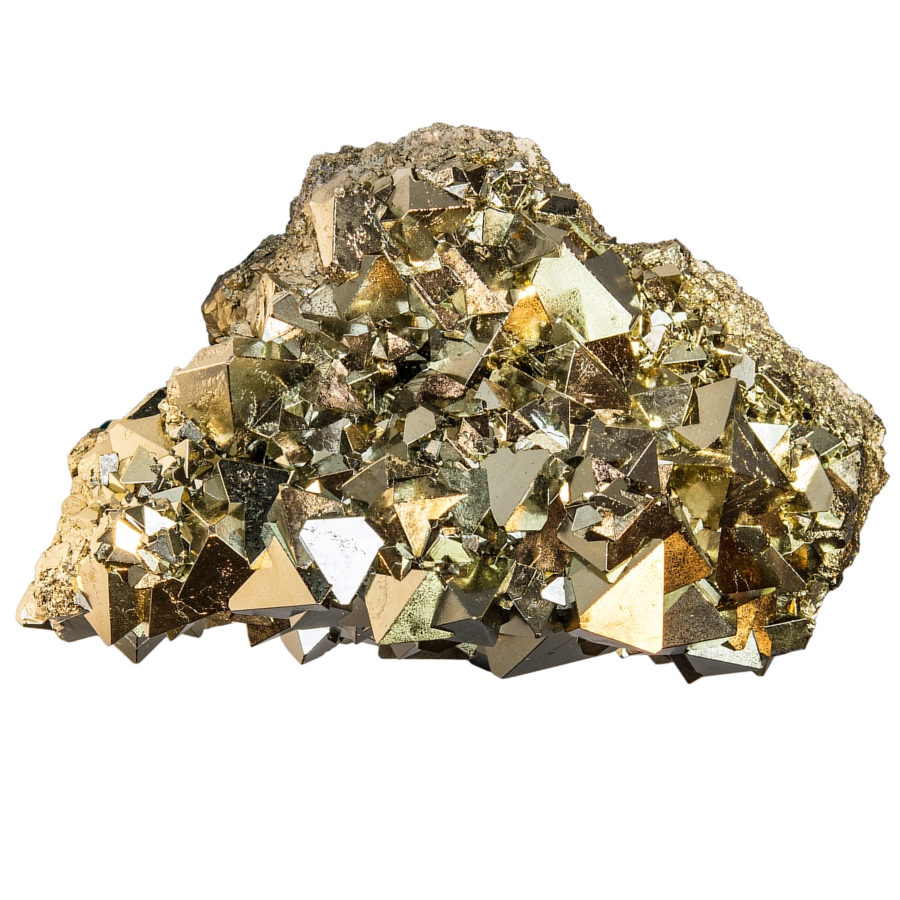
To have better luck once you get to a place like the ones above, here are more specific suggestions for where to spend most of your time. Our guide to Pennsylvania’s rocks, minerals, and gems goes into more detail.
Some of our suggestions cover large areas, so to help you decide where to begin your journey, here are some common places to find crystals:
Quarries
One great thing about quarries for crystal finding is that they let you get to rare and unique mineral formations. Because quarrying involves breaking through different rock layers, it often finds a wide range of crystals in perfect condition.
They can let you dig through parts of the earth that humans have not touched yet, which can help you find crystals and other minerals that you might not be able to find anywhere else.
Streams and Creeks
People who like to collect crystals will enjoy the unique and fun experience of looking for them in streams and creeks. These natural waterways are great for crystal hunting because they are always flowing and wearing away, which exposes and moves different minerals.
As water moves through the earth, it interacts with different rock formations, picking up and redistributing crystals. One of the best things about looking in these places is that the water’s natural tumbling action can polish the crystals and show off their true beauty.
Mine and Mine Dumps
Mines and mine dumps are often a treasure trove of unique crystal specimens. These locations are great for finding crystals because the minerals are exposed to the elements, which can cause them to change and develop unique colors and formations.
One of the great things about searching in mines and mine dumps is that you can find various minerals in one location. Also, many mines are located in remote and scenic areas, which can make for a fun and adventurous outing at the same time.
Crystal Mining Laws And Regulations
Mining and digging for crystals in Pennsylvania is legal for as long as you strictly abide by our state’s collecting laws, especially the one being imposed by the Pennsylvania Department of Environmental Protection (PADEP) for public and government lands.
First and foremost of this is to obtain necessary permits and permissions from landowners or other relevant government offices. Also, check any rules and regulations to protect the biodiversity in the area you will explore.
By being a responsible crystal hunter, you are helping sustain crystal mining for generations.
The Best Crystal Shops In The Area
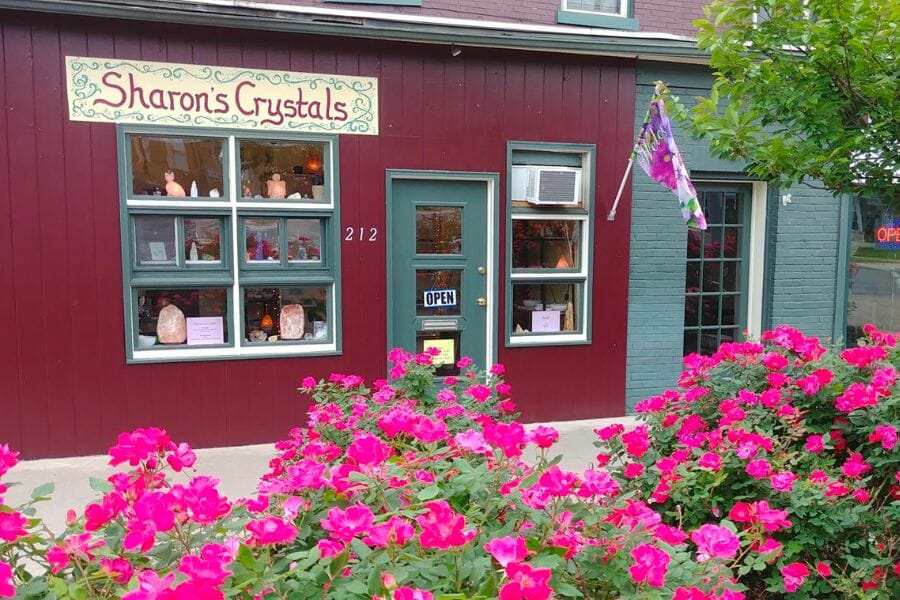
If you’re one to invest (literally) to your collection, chances are, you prefer to buy specific crystal specimens that will complete or add more variety to your collection. That’s why we also included here a list of some of the leading local crystal shops in our state:
- Rocky’s Crystals and Mines – 310 E Girard Ave, Philadelphia, PA 19125
- Bey’s Rock Shop – 615 PA-100, Bechtelsville, PA 19505
- Sharon’s Crystals – 212 East St, Bloomsburg, PA 17815
- Pocono Rock Shop – 254 Stadden Rd, Tannersville, PA 18372
- Middle Path Minerals – 2415 Frankford Ave Unit A, Philadelphia, PA 19125
- Rina’s Rocks – 120 S York Rd, Hatboro, PA 19040
- Heart of the Earth Crystals & Jewelry – 1504 Washington Ave, Hyde, PA 16843
- Creekside Rocks & Gems – 110 N Allegheny St, Bellefonte, PA 16823
- TJ’s Rocks and Gemcrafts – 4433 Lincoln Hwy, Downingtown, PA 19335
- Appalachian Rock Shop – 228 N Washington St, Butler, PA 16001
Additional places to find crystals in nearby states
If you’ve already tried all of our recommendations above or are planning a trip out of the state, you should check out our guides for neighboring states:
- Crystals in New York
- Crystals in New Jersey
- Crystals in Delaware
- Crystals in Maryland
- Crystals in West Virginia
- Crystals in Ohio
If you have any recommendations we haven’t covered, please leave them in the comments below!

